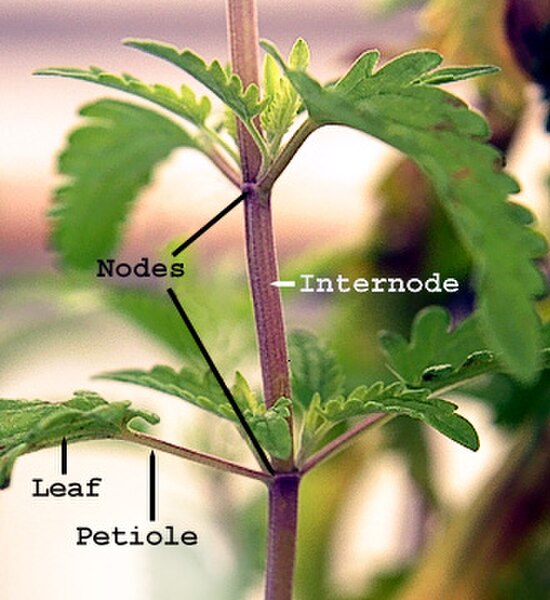In a vascular plant, the stele is the central part of the root or stem containing the tissues derived from the procambium. These include vascular tissue, in some cases ground tissue (pith) and a pericycle, which, if present, defines the outermost boundary of the stele. Outside the stele lies the endodermis, which is the innermost cell layer of the cortex.
Three basic types of protostele
Three basic types of siphonostele. The siphonostele shown on the left may also be called an amphiphloic siphonostele. The eustele shown on the right is collateral, i.e. with all the phloem on one side of the xylem.
A stem is one of two main structural axes of a vascular plant, the other being the root. It supports leaves, flowers and fruits, transports water and dissolved substances between the roots and the shoots in the xylem and phloem, photosynthesis takes place here, stores nutrients, and produces new living tissue. The stem can also be called halm or haulm or culms.
Stem showing internode and nodes plus leaf petioles
This above-ground stem of Polygonum has lost its leaves, but is producing adventitious roots from the nodes.
Climbing stem of Senecio angulatus.
Decumbent stem in Cucurbita maxima.






